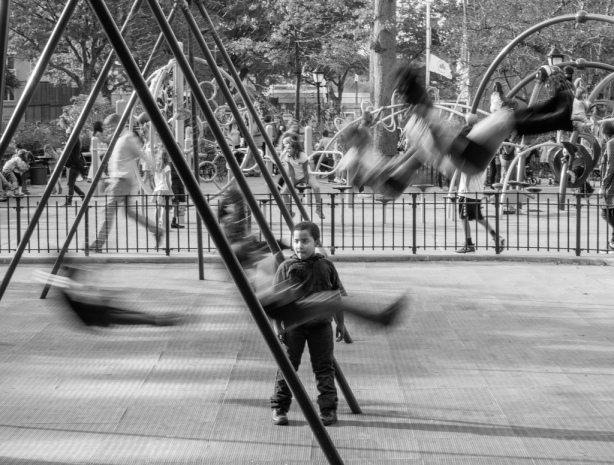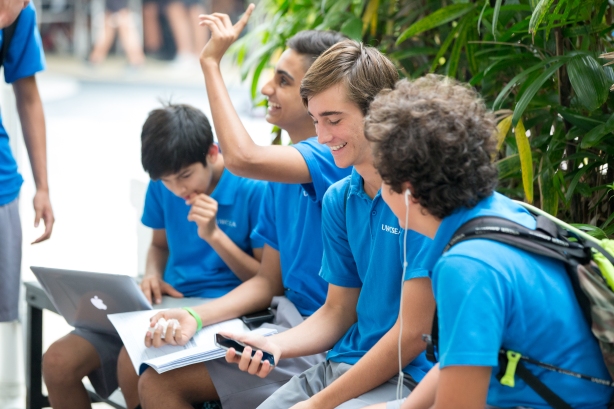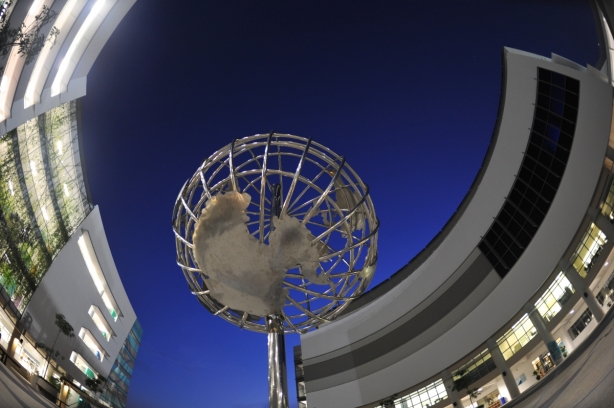
Photo Credit: <a href=”https://www.flickr.com/photos/62538557@N06/37583175180/”>Andy Atzert</a> Flickr via <a href=”http://compfight.com”>Compfight</a> <a href=”https://creativecommons.org/licenses/by/2.0/”>cc</a>
The Virtual Playground
Being social is a natural part of anyone’s life. From playing in the playground to chatting on the phone; meeting up with friends was commonplace when I was a teenager. Despite this still being true for teenagers today, I am so grateful that Facebook, Snapchat and some of the other giants of social media were not around when I was growing up: to have my life mapped out visually for everyone to see, the pressure to look a certain way, behave a certain way and interact online, it is positively exhausting! But we cannot ignore it, and, according to the Pew Report 2015, 92% of teens are online daily mostly down to the ease of accessibility with smartphones. (cited by A Lenhart, 2015). It’s the place where teens hang out. Most of them have multiple accounts and, since the report 3 years ago, I am certain the figures have gone up. In the Common Sense census of the same year, it reports that 13-18-year-old Americans spend up to 9 hours a day online but with only a quarter of this time being spent on social media (M Robb, 2015). I am certain in 2018, the numbers would be higher as Snapchat becomes even more popular. Much of its popularity is down to Snapstreaks, keeping the addicted teens locked in and in fear of failing friendships. Gamifying communication has been a game changer with Snapchat, but parents are becoming increasingly concerned about the time teens spend in these often obsessive and addictive behaviours. In her article on Huffington Past, mother, Julie Kelly says
“Kids are desperate to stay connected. They’re afraid to be left out, that they will miss something. This leads to a constant feeling of needing to be ‘on’.” (J Kelly, 2017)
In order to keep up with these digital natives, we must understand where they are at, keep the channels of conversation open and reconsider social media’s place in education. There are pros and cons for the use of social media and its place in education, particularly that of tweens is a hard fought debate. School aim to educate youngsters to fit in and thrive in society and, in order to fully understand the implications of social media’s place in the classroom, we must investigate how it operates in our world and what good it can bring to our children.
I first became aware of social media when I had left the UK and was working in an International school in Italy. Far from home, with a young family, we learnt to use a webcam to connect to our nearest and dearest. Teaching our parents how to use one remotely was the toughest part! Soon after moving I joined Facebook (2007) and later in 2009, Twitter. Prior to this, I do remember having Friendsreunited to reconnect with old school friends and a myspace account, but I cannot recall how long ago or if I really used the latter much: as with most of us, Facebook took over fairly quickly and overrode all other platforms.
Social media did exactly what it said on the tin and it became the place to be social and talk with friends and family when living abroad. I could share messages and photos and see what they were up to. At first, I didn’t quite understand Twitter: it seemed I was tweeting to an empty audience and I wasn’t quite sure of the point. But later, in 2011 following the Learning2 conference in Shanghai, I followed advice and started to follow a list of recommended educators. Following others, watching from a distance, “lurking”, and learning from them helps us to understand the protocols and processes of a new media. It also leads to new connections and ideas. That is the thing about Twitter: it is full of wonderful people and ideas, links to articles, videos and others creations. Of course, we have to filter out and ignore the rubbish and outrageous tweets, sift through the fake news and find what it is we are interested in.
Beyond microblogging
Having become a converted fan of Twitter, microblogging led to “proper” blogging. Finding an audience became my first fear – would I have anything interesting to say, would anyone want to read it and then what? What was it for? Blogging should have a purpose but be authentic to the individual. It should be a place to freely express oneself and this can be valuable when reflecting on a course, conference or weekly updates or shares. My first task, back in 2014, was finding other art teachers who blogged. As the COETAIL course evolved, we were encouraged to comment frequently on other cohort member’s posts, much like MA TCT, and develop closer connections. Creating authentic connections and developing genuine friendships virtually was an important part of the course. We live in a connected global classroom where anyone can stumble on your words and offer opinions and ideas. Building a PLN, a tribe, was a crucial element in developing dialogue.
Finding your tribe
It is the same for our students. Each day they interact face to face and online, building connections. They might have different friendships on social networks, from gamers on Steam to photographers on Instagram and makeup artists on YouTube. This is their world, their playground, a place to meet, talk and learn. Jabiz Raisdana, a prolific blogger, Middle school English teacher and writer, tells us “I see social networks as digital playgrounds. Our students are out there. They are playing and experimenting.” (J Raisdana, 2012)
And this is why integrating digital literacies should be fundamental in every school curriculum: literacies like reading, interpreting, decoding, analysing and sifting for truth. In Anne Longfield’s worrying report “Life in Likes” the children’s commissioner for England says children hit a “cliff edge” when starting secondary school and asks why aren’t we “preparing them for the pressures of social media?” (cited by M Browne, 2018). Helping students to successfully navigate the complexities of being social in this digital world means helping them to understand more about who they are, their values and wellbeing.
Global connections
As an experiment to connect art students across continents I joined with 3 other art teachers to collaborate on a project to connect and bring our students together online for feedback and discussion on their artwork. We set up groups where students would post, comment and connect through class blogs overseen in the art lessons. The term “Quadblogging” was first coined by David Mitchell, where 4 classes (or teachers) work together to comment on each other’s blogs in a rolling cycle. (Mitchell, 2011). If you are interested in the process, you can read more about the project and how students not only connected but also learnt more about digital citizenship. (N Hambleton, 2015)
For some it was a chance to have a voice and to share their creations, for others it was a chore, and that is the stumbling block: a blog should be personal, and, if it is forced (for portfolios or reflections) it won’t necessarily be an authentic voice. In her article on self-directed learning, Judy Robertson, in her paper on computers and education, mentions that the “commenting affordance of blogs” builds empathy and supports student development, and it is this function of social media that most interest me; how others can impact ideas and build skills through conversation and dialogue online. She goes on to talk about how blogs (in Higher Education) can support how students learn how to learn and to build their skills as independent thinkers. (Robertson, 2011)
Similarly, Huay Lit Woo and Qiyun Wang investigated the affordances of “weblogs” in developing critical thinking. Constructing a blog post requires research and analytical skills, referencing and organisation as well as writing and appropriate accreditation. Problem-solving, creating engaging content and synthesising ideas are higher order thinking, at the top of Bloom’s taxonomy. Silvia Tolisano equates a successful class blog to the upper levels of Dr Ruben Puetredura’s SAMR model. She shares that it can redefine learning by being a “central hub” where students and teachers share and create, connecting, communicating and collaborating with the wider world. (S Tolisano, 2014) Another of the key affordances of a blog is that the writer has an audience and that viewers can interact with the writer through commenting. (Woo and Wang, 2009). Building conversation, developing arguments and cultivating opinions, in and out of the classroom are all valuable life skills we should help our students to hone. Within a class, how often do students authentically interact with each other offering valued feedback and advice? How often do all voices, including the introverts, get heard? Offering opportunities to share opinions, reflect and ideas can open the channels of conversation, connect like-minded individuals and build a supportive community. Supporting our students and encouraging them to create genuine connections online is an ideal opportunity to support their wellbeing. Modelling and sharing experiences with Twitter or Instagram class accounts, and following specific hashtags are simple ways to start out, but also teaching safety and awareness of privacy. The media is littered with examples of adults and high profile individuals behaving badly online on Twitter and these can serve as learning opportunities in digital citizenship.
According to Piaget’s theory of constructivism, we build knowledge based on our experiences, (Piaget, 1976) and digital opportunities of connecting and collaborating online offer new ways to understand and make meaning. Moreover, Vygotsky repeats the importance of social interaction in the development of an individual. His theory on the zone of proximal development presupposes that an individual will develop alongside a more advanced. (Vygotsky, 1978) But is this true when connecting online? Is it the interactive and collaborative nature that social media affords that help to develop the skills in our students?
The Connected Teacher
Developing as an individual through connectivism is also true for adults. A small group of teachers in Singapore, piloted by a colleague, Tricia Friedman networked through individual monthly blogs to connect and start discussions around shared ideas and articles. It soon grew to include teachers further afield and, following this success, I am planning a new kind of connected and social play online with a Sketchbook challenge, digitally inspired but traditionally produced. These shared experiences will be literally passed around physically and virtually, connecting like-minded educators to share their ideas and thoughts visually and learn from one another.
Blogging for the MA TCT has pushed my own research, critical thinking and analytical skills. Being put back in the shoes of a learner, navigating my way through multiple readings and slowly and surely finding my own research route through past and present theories and ideas has been eye opening. It takes time to develop an authentic voice and courage to post publicly. I am developing deeper thinking, yet I would like to connect and encourage more authentic dialogue with the rest of the course participants. How can we do this more seamlessly, transparently and easily alongside our busy teaching lives? Could microblogging be a possibility or could we as a group work in smaller more focused clusters, much like quadblogging, to give meaningful feedback and create community?
Inspiring the next generation of creators
YouTube is students go-to community to learn a new skill or find how to do something. This has been the case for many years and video has become a popular tool for gamers and musicians to share their work. Often adults assume teenagers to be watching mindless videos or consuming endless accounts of gaming adventures but there are many youngsters sharing meaningful creations that can inspire the next generation of creators. Bloggers like SoSonia with her unique style of video began sharing her creative ideas as a young teenager and now she is now working for SoulPancake, making positive, meaningful and uplifting media for the “optimistic millennial”. Livbits is a 10 year old social media ambassador, showing youngsters how sharing online can promote student voice and audience. Boblhead is the 14 year old son of a music teacher in Singapore, recording his own music, making films and selling his own designed merchandise. It is through inspiring examples like these that we can justify social media’s place in modern society and the more examples we can share the more our students will be inspired to create and share.

Photo Credit: <a href=”https://www.flickr.com/photos/36085842@N06/36312920353/”>Ars Electronica</a> Flickr via <a href=”http://compfight.com”>Compfight</a> <a href=”https://creativecommons.org/licenses/by-nc-nd/2.0/”>cc</a>
The future of social media in education
Parents may still feel that social media doesn’t have a place in education, but it is where our youngsters play and learn. We should talk with them about what they do, who they listen to and learn from and how they use social media in their daily lives. Often it is assumed to be solely a playground, but through social media they are learning how to communicate, to behave and to create. With appropriate strategies, students need to be educated in the ethics of what they communicate, share and create online and their rights and the accompanying dangers. Recently, in the Times Educational Supplement, Jonathan Owen shares some newly published simplified guides to the terms and conditions of popular social media like Snapchat and WhatsApp. (Owen, 2017) With so many actively online, we must ensure they know what data and information are being gathered and shared.
We need to show students how much more social media can be than just sharing an image and waiting for the obligatory amount of likes, retweets or streaks to signify popularity. They need to develop better habits of living healthy digital lives. As educators and parents, we must address teenagers’ vulnerabilities and talk more openly about student wellbeing when playing in such a potentially volatile yet mesmerising and ?? playground.
What ways can you see social media positively impacting your students?
How might you use blogging to push their critical thinking skills and enhance their digital literacies and citizenship?
References
(n.d.). Retrieved from http://www.jabizraisdana.com/blog/what-it-might-be-authentic-student-blogging/
Browne, M. (2018, January 04). Children unprepared for social media ‘cliff edge’ as they start secondary school, Children’s Commissioner for England warns in new report. Retrieved from https://www.childrenscommissioner.gov.uk/2018/01/04/children-unprepared-for-social-media-cliff-edge-as-they-start-secondary-school-childrens-commissioner-for-england-warns-in-new-report/
Etherington, D. (2017, September 25). Instagram now has 800 million monthly and 500 million daily active users. Retrieved from https://techcrunch.com/2017/09/25/instagram-now-has-800-million-monthly-and-500-million-daily-active-users/
Hambleton, N. Learning in the library of COETAIL. (2016, March 12). Retrieved January 17, 2018, from https://itisallaboutart.wordpress.com/2015/05/10/learning-in-the-library-of-coetail/
Homayoun, A. (2018, January 09). Perspective | What teens wish their parents knew about social media. Retrieved from https://www.washingtonpost.com/news/parenting/wp/2018/01/09/what-teens-wish-their-parents-knew-about-social-media/?utm_term=.e202246cc858
Homayoun, A. (2018). Social media wellness: Helping tweens and teens thrive in an unbalanced digital world. Corwin, a Sage Company.
Kelly, J. (2016, February 02). Confronting my daughter’s addiction. To Snapchat. Retrieved from https://www.huffingtonpost.com/julie-kelly/confronting-my-daughters-_b_9138986.html
Lenhart, A. (2015, April 08). Teens, Social Media & Technology Overview 2015. Retrieved from http://www.pewinternet.org/2015/04/09/teens-social-media-technology-2015/
Mitchell, D (2012, July 18). State of Now #140conf NYC 2012: “QuadBlogging – linking learning to global audience”. Retrieved January 17, 2018, from https://www.youtube.com/watch?v=w8J8Jrr_eq4
Piaget, J. (1976). Piaget’s Theory. Piaget and His School, 11-23. doi:10.1007/978-3-642-46323-5_2
Ripp, P. (2017). Reimagining literacy through global collaboration. Solution Tree Press, a division of Solution Tree.
Robb, M. (2015, November 03). Tweens, Teens, and Screens: What Our New Research Uncovers. Retrieved January 17, 2018, from https://www.commonsensemedia.org/blog/tweens-teens-and-screens-what-our-new-research-uncovers
Robertson, J. (2011, 09). The educational affordances of blogs for self-directed learning. Computers & Education, 57(2), 1628-1644. doi:10.1016/j.compedu.2011.03.003
Safronova, V. (2017, December 21). Instagram Is Now a Dating Platform, Too. Here’s How It Works. Retrieved from https://www.nytimes.com/2017/12/21/style/instagram-thirst-traps-dating-breakups.html?_r=0&mtrref=www.diigo.com
Seven reasons teachers should blog. (n.d.). Retrieved from http://www.steve-wheeler.co.uk/2011/07/seven-reasons-teachers-should-blog.html
Social media ‘jargon buster’ highlights pupils’ digital rights. (2017, September 29). Retrieved from https://www.tes.com/news/school-news/breaking-news/social-media-jargon-buster-highlights-pupils-digital-rights
This is what it’s like to grow up in the age of likes, lols and longing. (n.d.). Retrieved from http://www.washingtonpost.com/sf/style/2016/05/25/13-right-now-this-is-what-its-like-to-grow-up-in-the-age-of-likes-lols-and-longing/?utm_term=.74149e86900b
Upgrading Blogs Through Lens of SAMR | Silvia Tolisano- Langwitches Blog. (2014, May 23). Retrieved January 17, 2018, from http://langwitches.org/blog/2014/05/23/upgrading-blogs-through-lens-of-samr/
The Zone of Proximal Development. (n.d.). Lev Vygotsky. doi:10.5040/9781472541437.ch-004
Wang, Q., & Woo, H. L. (2010, 05). Investigating students’ critical thinking in weblogs: An exploratory study in a Singapore secondary school. Asia Pacific Education Review, 11(4), 541-551. doi:10.1007/s12564-010-9101-5
Work. (n.d.). Retrieved January 17, 2018, from http://soulpancake.com/work/

